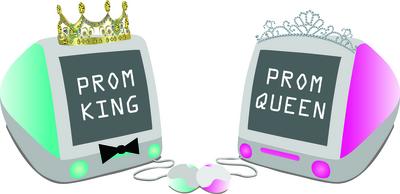Advertisement
Grab your lab coat. Let's get started
Welcome!
Welcome!
Create an account below to get 6 C&EN articles per month, receive newsletters and more - all free.
It seems this is your first time logging in online. Please enter the following information to continue.
As an ACS member you automatically get access to this site. All we need is few more details to create your reading experience.
Not you? Sign in with a different account.
Not you? Sign in with a different account.
ERROR 1
ERROR 1
ERROR 2
ERROR 2
ERROR 2
ERROR 2
ERROR 2
Password and Confirm password must match.
If you have an ACS member number, please enter it here so we can link this account to your membership. (optional)
ERROR 2
ACS values your privacy. By submitting your information, you are gaining access to C&EN and subscribing to our weekly newsletter. We use the information you provide to make your reading experience better, and we will never sell your data to third party members.
Neuroscience
Newscripts
Laugh tracks and pen lassos are making us giggle
by Laura Howes
August 11, 2019
| A version of this story appeared in
Volume 97, Issue 32
Have you heard the one about canned laughter?

If your jokes are falling flat in the lab, or your kids are groaning at your puns, Newscripts has just the advice you need. Neuroscientists at University College London have found that you can make your jokes funnier by adding a laugh track (Curr. Biol. 2019, DOI: 10.1016/j.cub.2019.05.073). And the laugh tracks work best when the recording features spontaneous laughter as opposed to posed laughter.
“I wasn’t expecting it to be quite such a strong effect,” study leader Sophie Scott tells Newscripts. A spontaneous-laughter track will make a joke about 10–15% funnier.
It might seem silly, but this is serious research. Scott and her team work on understanding how our brains process vocal communication. In recent years, Scott has focused on the neuroscience of laughter to understand how we use laughter in social situations and what happens when we are overcome and can’t stop laughing. We laugh more when other people are also laughing, but even though sitcoms have used laugh tracks for many years, it wasn’t clear that laughter actually makes them funnier.
To run the test, PhD student Ceci Qing Cai found a bunch of intentionally groan-worthy “dad jokes.” “We deliberately took bad jokes that we could make funnier” rather than trying to improve jokes that were already funny or puns that need more thinking, Scott says. When the researchers had a collection of bad jokes, they recorded a professional comedian reading them aloud and then played the recording to neurotypical people and people with autism to get a baseline rating of how funny the jokes were perceived to be.
Next, the team played the same jokes to a different group of participants, but this time half the jokes were paired with short tracks of spontaneous laughter and the other half with short tracks of posed laughter.
The team found that adding laughter increases how funny a joke is perceived to be, irrespective of the type of laughter, but spontaneous laughs increase a joke’s funniness rating more. And that’s true for neurotypical people and people with autism, which Scott says she found surprising.
It seems everyone is likely influenced by laughter, whether they realize it or not, although exactly how that works for people with autism might be different, Scott says. Her lab is now exploring those differences. But for now, if you find your jokes are falling flat this summer, you could add a laugh track. Newscripts would certainly find that funny.
Pentrifugal force freshens up markers

To create some spontaneous laughter for a laugh track, or just help with departmental stationery supplies, you could use biologist Scott Barolo’s trick for reviving dry-erase markers: taping them to a string and spinning them over your head like a lasso.
While sitting in a conference room one Monday in late July, Barolo found that all eight of the whiteboard markers in the room wouldn’t write. “It just drove everybody in the meeting absolutely crazy,” he recalls. With time between the meeting and lunch, the University of Michigan–based scientist decided to test a technique he’d heard about; he then published the results of the “pentrifuge” on Twitter.
Newscripts spotted Barolo’s tweets (@sbarolo) after they went viral, with other Twitter users taking up the challenge and confirming the reproducibility of the experiment. “One of my Twitter friends asked me about it. And I said, ‘Yeah. It’ll do 500 likes,’ you know,” Barolo tells Newscripts. Instead, the original tweet has over 11,000 likes and 2,000 retweets. Barolo has muted notifications.
As for a risk assessment, Barolo says that one pen cap did fill with ink during the experiment, and Newscripts has concerns about a pen being accidentally released as a projectile. Newscripts recommends protective clothing and eyewear.
Laura Howes wrote this week’s column. Please send comments and suggestions to newscripts@acs.org.





Join the conversation
Contact the reporter
Submit a Letter to the Editor for publication
Engage with us on Twitter